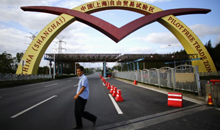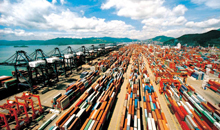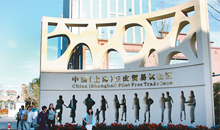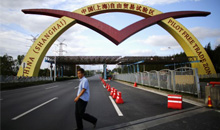Three pilot trade zones proposed
China plans to launch three new pilot free trade zones to test greater opening-up and tap the economy's huge potential to hedge against mounting downward pressure next year.

(Editor: Leona)
New projects likely to be located in Guangdong, Tianjin and Fujian
China plans to launch three new pilot free trade zones to test greater opening-up and tap the economy's huge potential to hedge against mounting downward pressure next year.
The new zones will be set up at sites in Guangdong and Fujian provinces and in Tianjin, a State Council executive meeting decided on Friday, a year after the pioneering China (Shanghai) Pilot Free Trade Zone was set up.
Experts said the State Council's proposal can win the top legislature's approval at the end of December at the earliest.
A statement issued after the meeting said the three areas will take on most of the reform initiatives now being applied to the Shanghai pilot zone, in the boldest reform steps taken by China in decades.
Although the statement did not reveal the exact sites and size of the new zones, it said they will be built based on existing development parks.
This indicates the sites are likely to be the Qianhai Special Economic Zone in Shenzhen, Guangdong province, the Tianjin Binhai New Area and Pingtan Comprehensive Pilot Zone in Fujian.
Ma Yunze, a professor at Binhai Research Institute at Nankai University in Tianjin, said the new zones are likely to cover a larger area than the Shanghai pilot zone.
They are not likely to overshadow the Shanghai zone, as they have different advantages and development priorities, Ma said.
For instance, Tianjin holds the edge among the three new zones in terms of high-end manufacturing, and is in a better position than Shanghai to develop the free trade of industrial goods, Ma said.
As the only free trade zone in northern China and as a traditional logistics hub, Tianjin will face the test of bringing greater opening-up to surrounding areas, including Hebei province and Beijing.
Tianjin Port, the world's fourth-largest in terms of merchandise throughput capacity, which is located in the Tianjin Binhai New Area, is also an important section of the planned Silk Road Economic Belt linking Asia and Europe.
"It is difficult to boost trade in industrial goods without a substantial area of land to house more containers and new berths," Ma said. "I believe the zone in Tianjin will cover a much larger area than the Shanghai pilot zone."
Tianjin had proposed turning the Dongjiang Bonded Area, which occupies about 40 sq km, into a free trade zone. But media reports said the city later revised its proposal to include an even larger area.
Geographic proximity means the Guangdong pilot zone is more likely to focus particularly on Hong Kong, China and Macao, while the Fujian zone will focus on Taiwan, China to boost cross-Straits trade, Ma said.
The State Council has asked government bodies to speed up the drafting of plans to set up the new zones before the proposal is sent to the National People's Congress Standing Committee, the country's top legislative body.
Chen Bo, secretary-general of the FTZ Institute at Shanghai University of Finance and Economics, said the implementation of some reform initiatives requires approval from the legislature as they may be contrary to existing laws.
The legislature will convene at the end of this month, but Chen said he doubts that the plans will be ready for reading by then.
Friday's meeting also agreed to expand part of the ongoing reform initiatives at the Shanghai zone to the entire Pudong New Area in the city, comprising about 1,430 sq km.
Twenty-eight reform initiatives on investment, trade and finance that apply to the Shanghai zone will be promoted nationwide if they do not contravene existing laws.





 沪公网安备31010402003309号
沪公网安备31010402003309号



